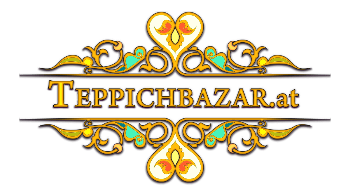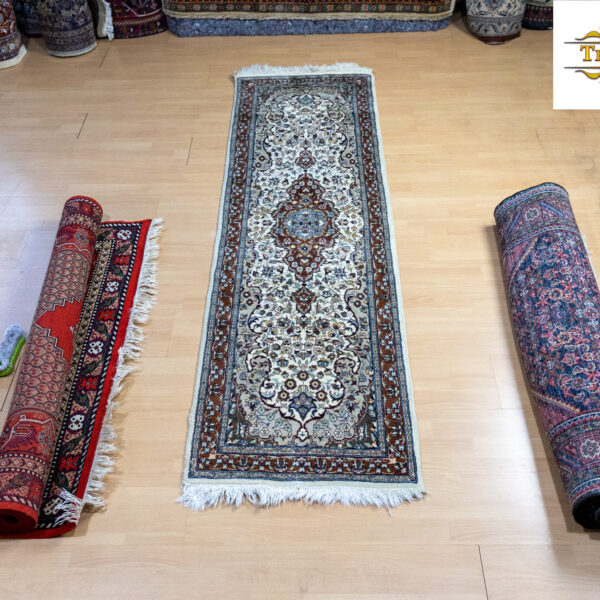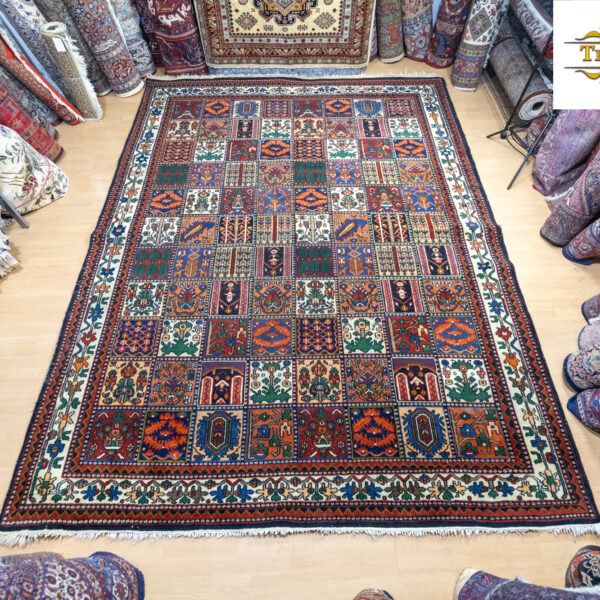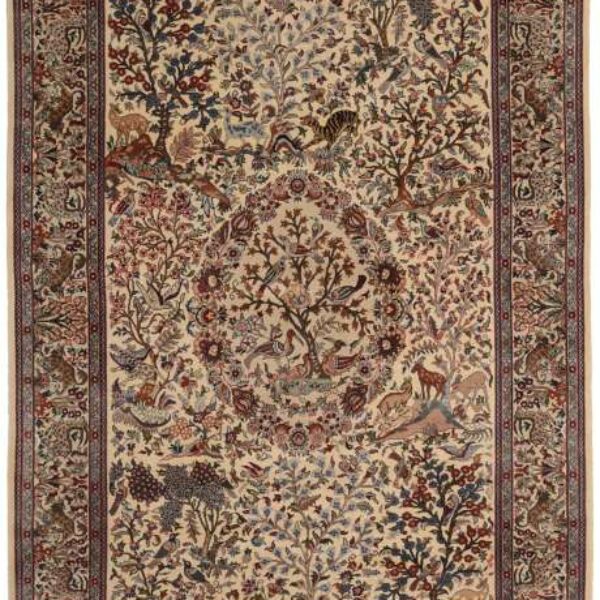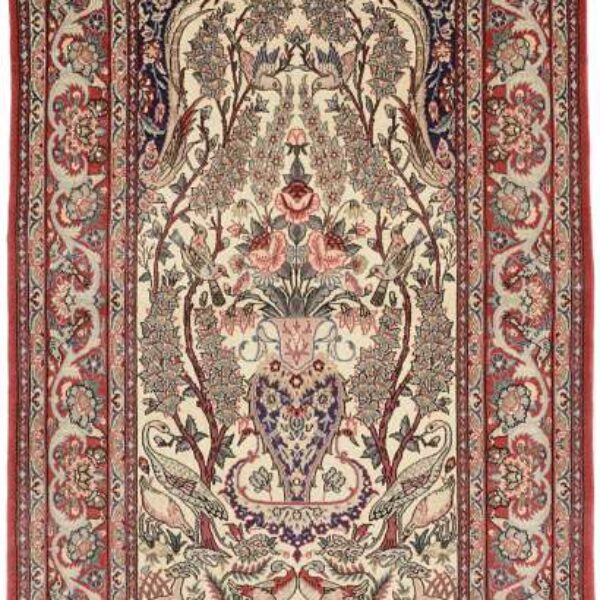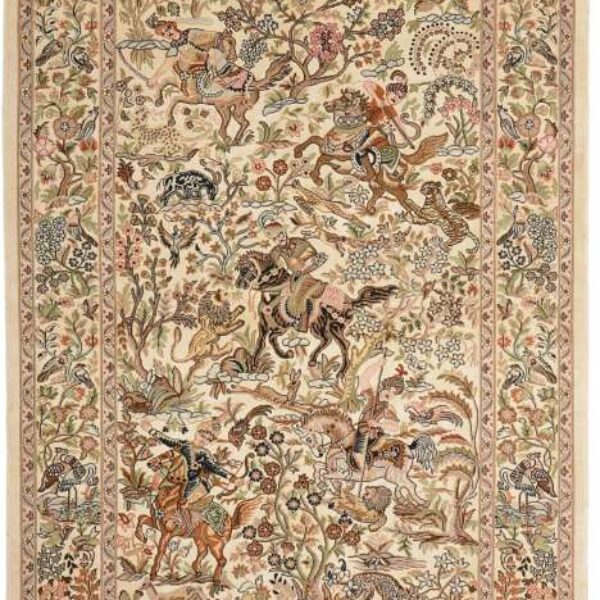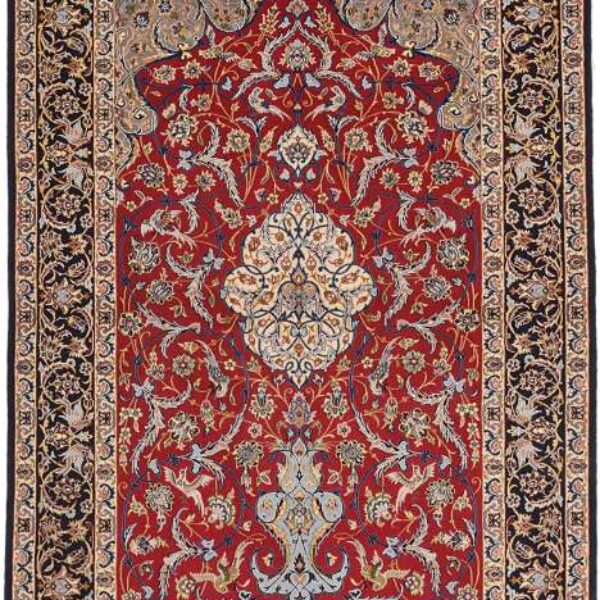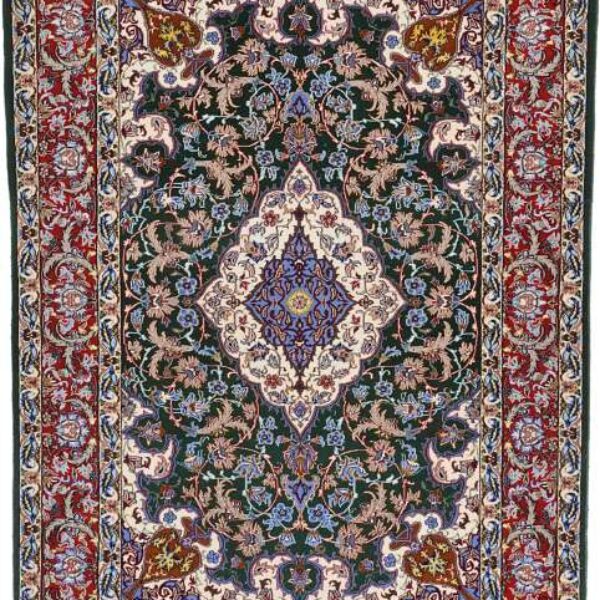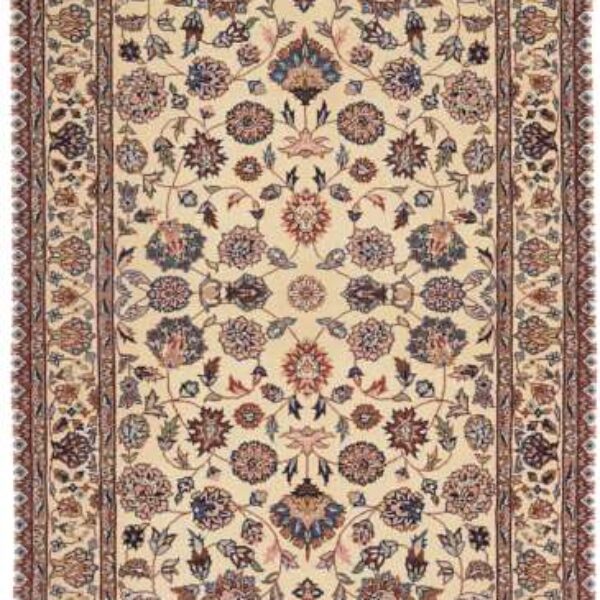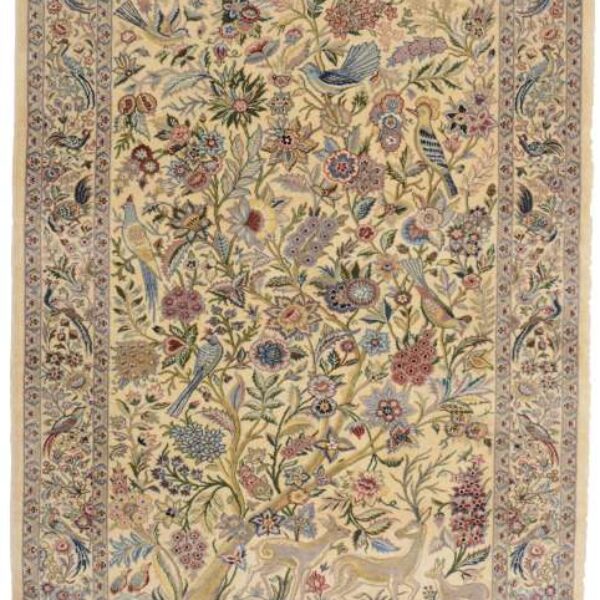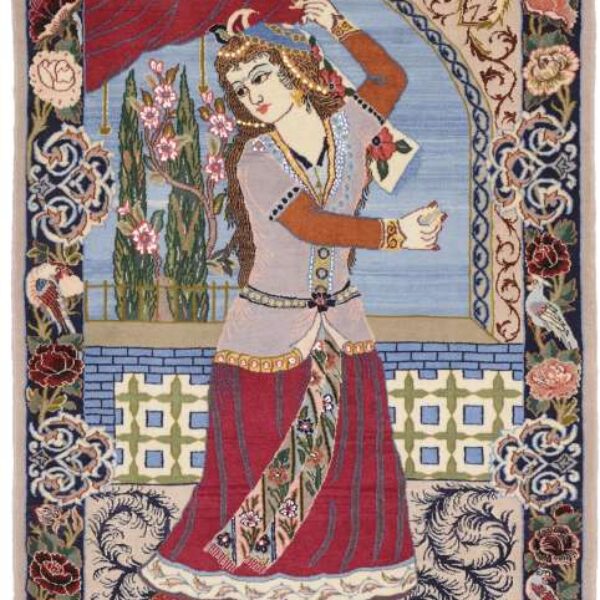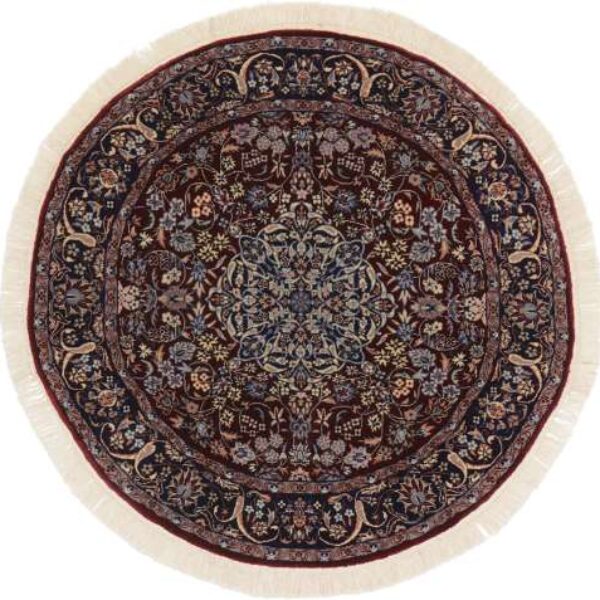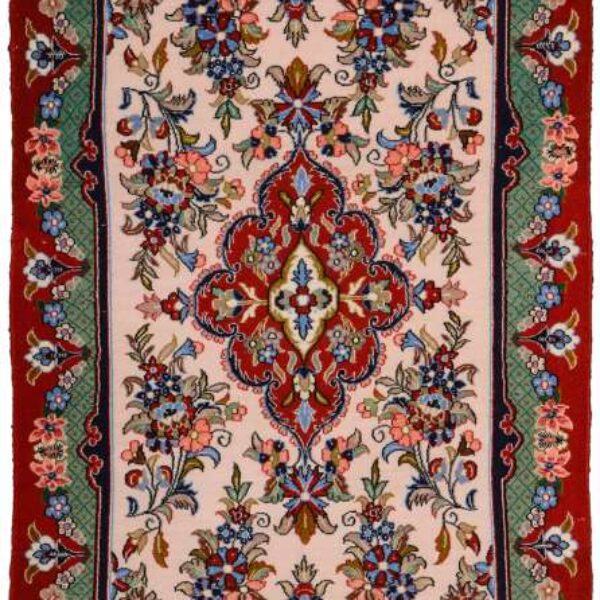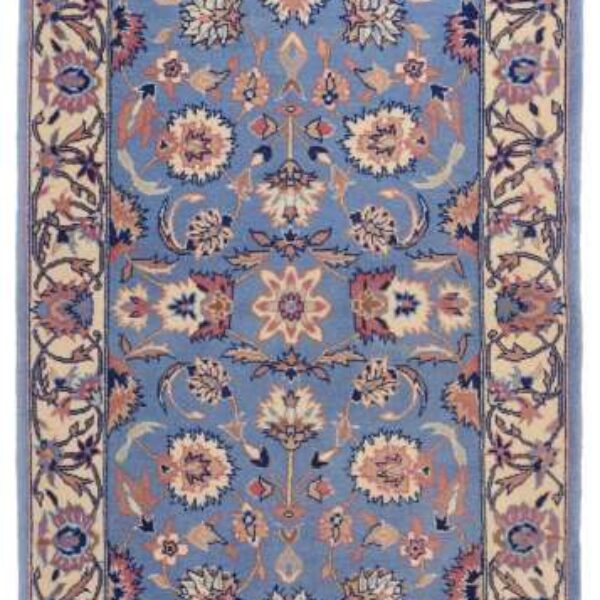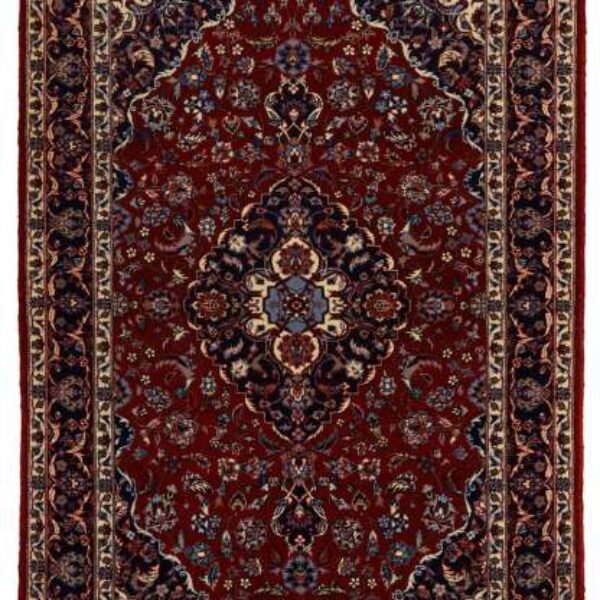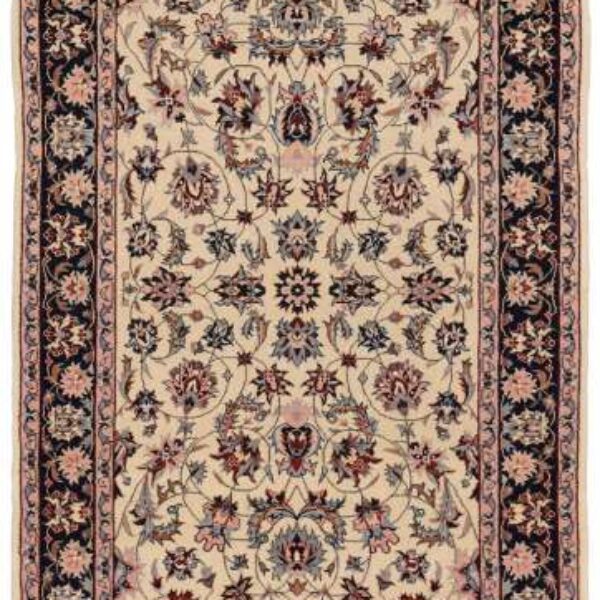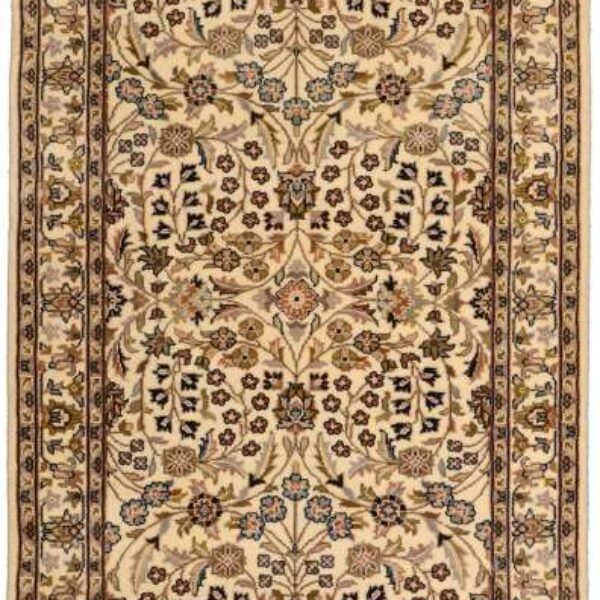Isfahan carpets
Isfahan carpets
Persian carpets from Isfahan
Located in central Iran at the foot of the Zagros Mountains, the city of Isfahan has a rich history of carpet making. During the reign of Malik Shah I. and then by Shah Abbas the Great, Isfahan was made the capital of Persia (Iran). The history of carpet making in Isfahan has been interrupted several times, mostly by military occupation and invasions. Also spelled and pronounced Isfahan, Sepahan, Esfahan or Hispahan, the city reached its heyday during the Safavid Dynasty (1501-1736), particularly under the rule of Shab Abbas, who witnessed a renaissance of art throughout Persia, the center of which was the cultural city. Over time, many cultures settled in Isfahan, and to this day, the cosmopolitan city is full of intricate works of art, impressive mosques, bridges, palaces, and world-renowned architecture. Besides the architecture and carpets, Isfahan is also known for its textiles, arts, steel, crafts and metalwork, as well as for its traditional foods and sweets. The carpets knotted in this city are perhaps the most beautiful and valuable in the whole world. The most popular design is a central medallion surrounded by tendrils or flowers that are usually red, blue, or indigo blue on an ivory background. Other popular design elements and motifs are vases, garden and tree motifs, Shah Abbasi motifs and sculptures. The inspiration for the carpet design comes from traditional motifs and patterns, nature, poetry and the great poets, but also from the city's rich architectural history; the famous Shah Lutf Allah Mosque is a particular muse for many of the carpets made in this great city. A large Isfahan rug with an Isfahan pattern A fine Isfahan rug with a traditional and colorful medallion design An intricate Isfahan rugThe knots per square inch used in rugs woven in Isfahan can vary from 120 upwards, but exceed in usually 200 if woven in the town itself and not in a neighboring town or village. Many high-quality Isfahan carpets are made on a silk base, which makes them particularly fine and valuable. Sizes vary but most are medium to large. The most famous weavers include the Seirafian family and their workshops, and some of the world's most expensive carpets come from Isfahan. Many of them were woven before the Afghan invasion, i.e. before the 17th century. Century. The world famous Polish or polonaise carpets with their silver and gold threads were also woven in Isfahan and not in Poland as their name might suggest. A Safavid Isfahan rug made of silk and wool has sold for $4,3 million A Safavid Isfahan rug has sold for $4 million at Christie's auction house. 45 million The most expensive Isfahan carpet was sold for $4,65 million. Out of the 10 most expensive carpets ever sold, three are from Isfahan, confirming the “City of Art” as one of the best places for handcrafted flooring art. From left to right: A Safavid-period polonaise from Isfahan woven from silk, wool and metallic threads (left). This rug was sold at Sotheby's in 2009 for $4,3million, which was £2,75million at the time. This rug measures just 1,6 x 1,1 meters and sold for a whopping $2,44 million per square meter. At the time of writing, the carpet is the ninth most expensive in the world. Another Safavid-era rug, this Isfahan silk rug (centre) was part of Doris Duke's collection and was sold by Christies in 2008 for $4,45 million. At the time of sale, the carpet was the most expensive ever sold. The 2,3-foot by 1,7-foot carpet cost the private collector a whopping $1,14 million per square meter. The carpet is currently the seventh most expensive in the world. Sotheby's sold this Isfahan rug (right) from the William A. Clark for $4,65 million. It is 13,5 x 4,3 m and by far the largest at $80.000 per square meter. So although it is the most expensive Isfahan rug ever sold and the sixth most expensive in the world at the time of writing, it is the cheapest per square meter of the three rugs featured. You can click here to see our current Isfahan carpets.
Isfahan carpets are knotted on a silk or cotton ground with up to 1.000.000 Persian knots/m² (there are pieces from the master workshop in Seirafian that have a higher number of knots), with high-quality wool for the pile of a special quality (in Iran known as cork wool) is used, which is usually cut quite low. In the early days of Isfahan's resurgence as a center for high quality carpets, traditional patterns inspired by architectural designs and the tiles decorating the buildings were used for most carpets. historical house of this great city.
